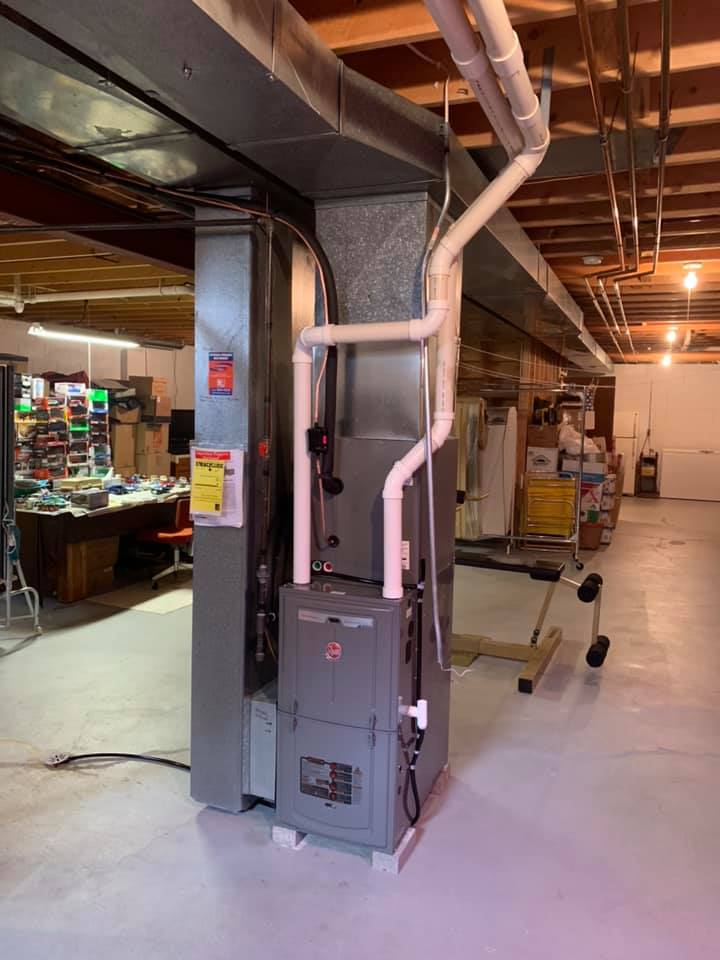The Ultimate Overview to Heater Installation for a Cozy Home
Heating system installation is a critical facet of preserving a comfortable home setting, especially during the cooler months. As you think about these elements, the inquiry stays: what steps can you take to guarantee your furnace offers you well for years to come?
Types of Heaters

Gas heating systems are one of the most usual choice due to their effectiveness and reduced functional prices. They make use of natural gas or propane, offering fast home heating and regular efficiency, making them ideal for colder climates.
Electric furnaces, while typically less complicated to install and maintain, tend to have higher operational costs. They are frequently favored in areas where gas service is not available or for homes with existing electric infrastructure.
Oil heating systems, though less usual today, stay a feasible alternative in particular areas. They shed heating oil, which can be beneficial during colder months, but their reliance on oil distribution postures possible obstacles.
In addition, there are high-efficiency designs offered across these types, which can significantly decrease power usage and utility costs - furnace installation. Inevitably, recognizing these heating system types will certainly aid house owners select a system that aligns with their home heating requires, budget, and power choices
Selecting the Right Size
Picking the proper size for a furnace is essential to making certain ideal performance and power effectiveness. An undersized heater will struggle to keep comfortable temperature levels throughout the cold months, bring about boosted wear and tear, greater energy costs, and prospective system failure. Alternatively, an oversized heater may cycle on and off also often, causing inefficient home heating and unequal temperature level distribution within the home.
To establish the right furnace size, an estimation referred to as the Guidebook J tons estimation ought to be executed. This process examines various aspects, consisting of the square footage of the home, insulation degrees, home window dimensions, and local climate conditions. This extensive analysis makes certain that the heating system fulfills the specific heating demands of the room.

Installment Refine Introduction
In regards to materials, you will certainly need ductwork, insulation, and sealing tape to make sure optimal air flow and power performance - furnace installation. It is also essential to have a new heater filter available, in addition to venting materials, such as PVC pipe or hop over to these guys metal flue, depending upon the sort of furnace being set up
Safety equipment, consisting of gloves, goggles, and a face mask, is likewise critical to secure versus dust and debris during setup. Having all these devices and products readily offered not only enhances the procedure but also enhances the safety and security and efficiency of the heater installation.
Maintenance Tips for Long Life
To make certain the durability of your heating system, it is important to carry out a regular More hints upkeep schedule that addresses essential components of the system. Beginning by replacing or cleaning up the air filter every one to three months, as a clogged up filter can limit air movement and reduce effectiveness. Additionally, evaluate and cleanse the blower assembly to stop dust accumulation that can impede performance.
Next, inspect the thermostat setups and alter if needed to guarantee exact temperature regulation. Examine the ductwork for leakages or clogs, as this can lead to power loss and unequal heating. Routinely lubricate the motor and bearings according to the supplier's recommendations to minimize wear and tear.
Professional examinations should occur every year, where a certified technician can analyze the furnace's total condition, look for gas leakages, and make sure that security functions are working properly. Finally, think about installing a programmable thermostat to maximize power usage and keep regular home temperature levels. By adopting these maintenance techniques, you can boost your furnace's effectiveness, expand its life expectancy, and inevitably delight in a comfortable and comfy home setting.
Conclusion
